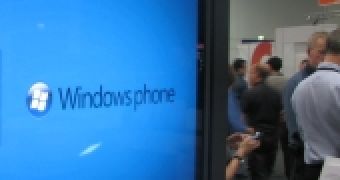From the latest iteration of the Windows platform for mobile devices to Windows Phone rivals, Microsoft protocols have become the industry standard when it comes down to content synchronization.
The Redmond company notes that millions of people worldwide turn to Outlook Mobile Inbox on their smartphone each day to check for updates to emails, calendar and contacts.
A range of devices running Windows Phone 7 and older Windows Mobile releases, but also smartphones such as Apple iPad, or from HP/Palm, HTC, Nokia, Samsung, Sony Ericsson, and even from Google feature Microsoft Exchange ActiveSync (EAS).
These XML-based protocols are designed to allow mobile devices to communicate over HTTP and HTTPS in order to synch e-mail, contacts, calendar, tasks and notes.
The connection is established between a messaging server and a mobile device, and the popularity of EAS is directly connected with that of Exchange Server.
No less than 65% of businesses have embraced Exchange Server, and in this regard, it’s not hard to see why Microsoft has already signed a plethora licenses agreements for ActiveSync to have third-party devices also play nice with Exchange.
“Exchange is available everywhere today, through Outlook on the PC, Web Apps in the browser, and as Outlook Mobile on mobile phones,” noted Adam Glick, senior technical product manager, Exchange Server at Microsoft.
“Because 65 percent of businesses worldwide use Exchange Server for their e-mail and calendaring, the great thing is that almost every smartphone, even those on non-Microsoft platforms, can use Exchange wireless e-mail, right out of the box.”
Glick adds that the software giant is opened to licensing EAS to third-party companies, and even rivals on the mobile market such as Apple and Google.
“The EAS protocols have become the industry standard for mobile messaging synchronization. But don’t just take our word for it, many leading companies license EAS for use on their phones and mobile operating systems, including Apple, Google, HP/Palm, HTC, Nokia, Samsung, Sony Ericsson, and Symbian,” revealed Julia White, Senior Director, Exchange Product Management.
Of course, while EAS might be missing from devices running non-Microsoft mobile platforms, the technology is built into Windows Phone 7 by default.
With Exchange ActiveSync native to Windows Phone 7, customers running smartphones from the software giant’s partners will be able to seamlessly set up and access multiple e-mail accounts and calendars.
“We’re always aiming to understand productivity better than any other company, and to exceed our customers’ expectations on the smartphone. This is a pivotal moment in mobile phone technology history, with the innovation coming to market with Exchange ActiveSync, smartphone manufacturers and customers are the productivity winners,” Glick added.
UPDATE: Correction related to the number of EAS licenses.

 14 DAY TRIAL //
14 DAY TRIAL //